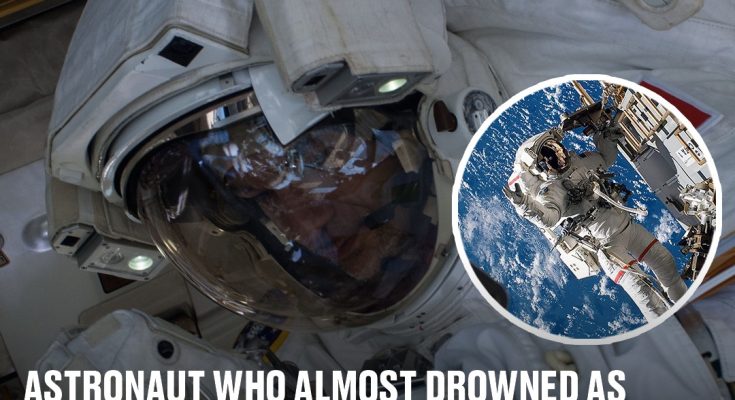An astronaut has recalled the horrifying moment he nearly drowned in space when water leaked into his helmet during a spacewalk.
The idea of there being water in space sounds a bit odd, but when you look at NASA astronaut Luca Parmitano’s spacewalk in July 2013, it’ll make a bit more sense.
Parmitano and his fellow spacewalker, Chris Cassidy, were conducting the six-hour mission when they suddenly noticed something strange.
Watch below:
Just an hour into the mission, which was supposed to involve routine maintenance outside the International Space Station (ISS), Parmitano noticed water accumulating inside his helmet.
He initially thought it was a water leak from his drinking bag, however, the volume of water was increasing.
Having warned NASA three times, the astronaut was struggling to see, hear or communicate properly.
“I feel a lot of water on the back of my head, but I don’t think it is from my bag,” he recalled.
“The leak is not from the water bag and it is increasing.
“I’m thinking that it might not be the water bag.”
Parmitano was seriously at risk of drowning in space.

NASA astronaut Luca Parmitano almost drowned when water leaked into his helmet during a spacewalk in 2013 (DMITRY LOVETSKY/POOL/AFP via Getty Images)
Mission Control had no choice but to abort the spacewalk and Parmitano managed to make his way back to the ISS airlock.
If it wasn’t for his calm response during the emergency, there could have been a more serious outcome.
Following the incident, NASA identified that there were technical issues in the spacesuit’s design, which were first noticed during a spacewalk a week prior.
In a blog post published on the ESA (European Space Agency) website, Parmitano opened up about the moment, writing: “The unexpected sensation of water at the back of my neck surprises me – and I’m in a place where I’d rather not be surprised.
“On the ground, Shane confirms they have received my message and he asks me to await instructions.
“Chris, who has just finished, is still nearby and he moves towards me to see if he can see anything and identify the source of the water in my helmet.

He lived to tell the tale (SERGEI ILNITSKY/POOL/AFP via Getty Images)
“But I think the liquid is too cold to be sweat, and more importantly, I can feel it increasing.
“My ability to see – already compromised by the water – completely vanishes, making my eyes useless.
“But worse than that, the water covers my nose – a really awful sensation that I make worse by my vain attempts to move the water by shaking my head.
“By now, the upper part of the helmet is full of water and I can’t even be sure that the next time I breathe I will fill my lungs with air and not liquid.
“Now that we are repressurizing, I know that if the water does overwhelm me I can always open the helmet. I’ll probably lose consciousness, but in any case that would be better than drowning inside the helmet.”
He also warned: “We are explorers, not colonizers. The skills of our engineers and the technology surrounding us make things appear simple when they are not, and perhaps we forget this sometimes. Better not to forget.”
Featured Image Credit: NASA/Photo by NASA via Getty Images
Topics: NASA, Space, Technology
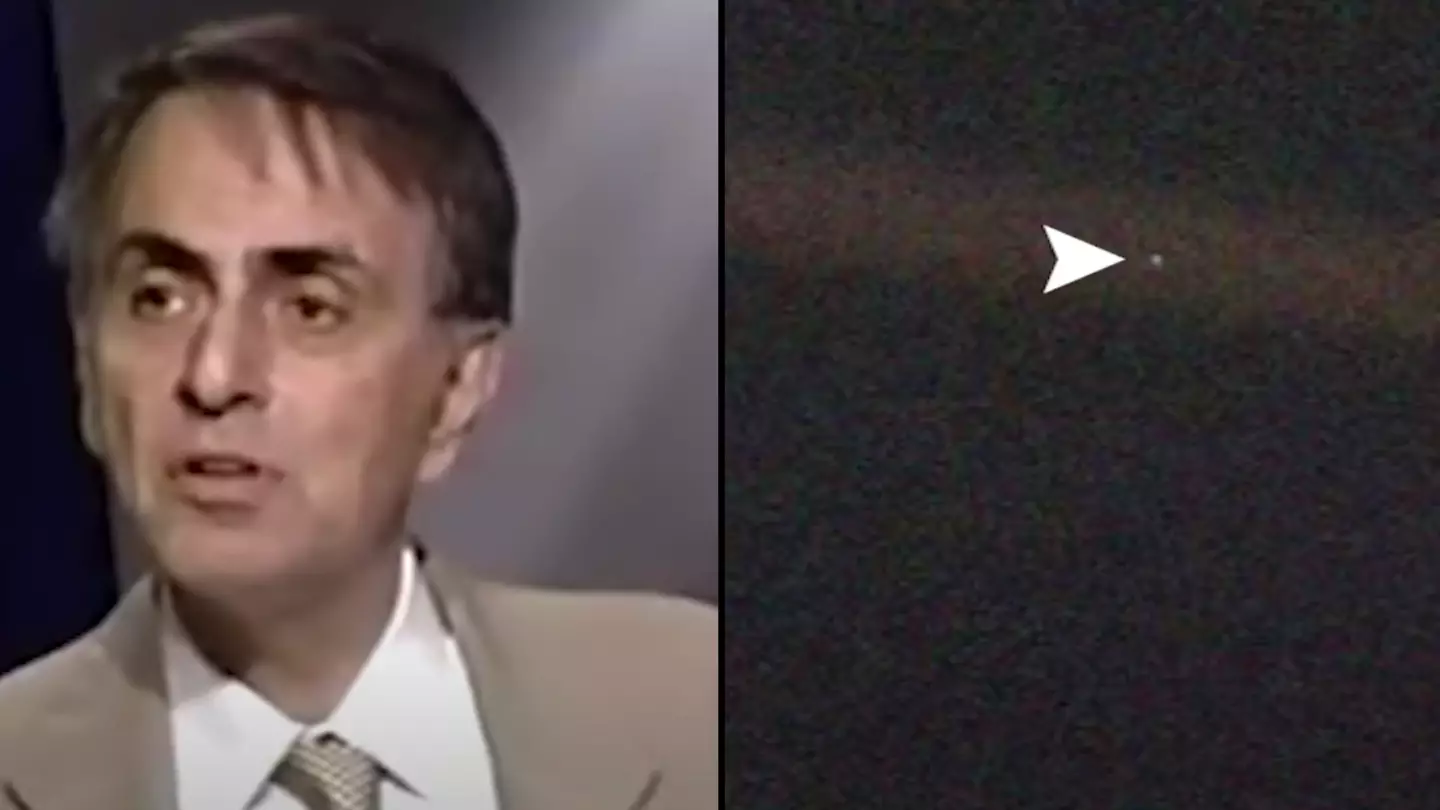
The astronomer who unveiled the ‘Pale Blue Dot’ in the 1990s has explained why he believed the image was so important for all of mankind to see.
Throughout his life, legendary planetary scientist Carl Sagan dedicated his work to furthering our understanding of space and the possibility of extraterrestrial life (aka aliens) existing.
Often described as ‘the scientist who made the Universe clearer to the ordinary person’, Sagan took the complex – and often mind-boggling – world of astrophysics and made it easily accessible to the likes of you and I.
In 1990, Sagan unveiled an image called the ‘Pale Blue Dot’ to the world, take a look at the image below:
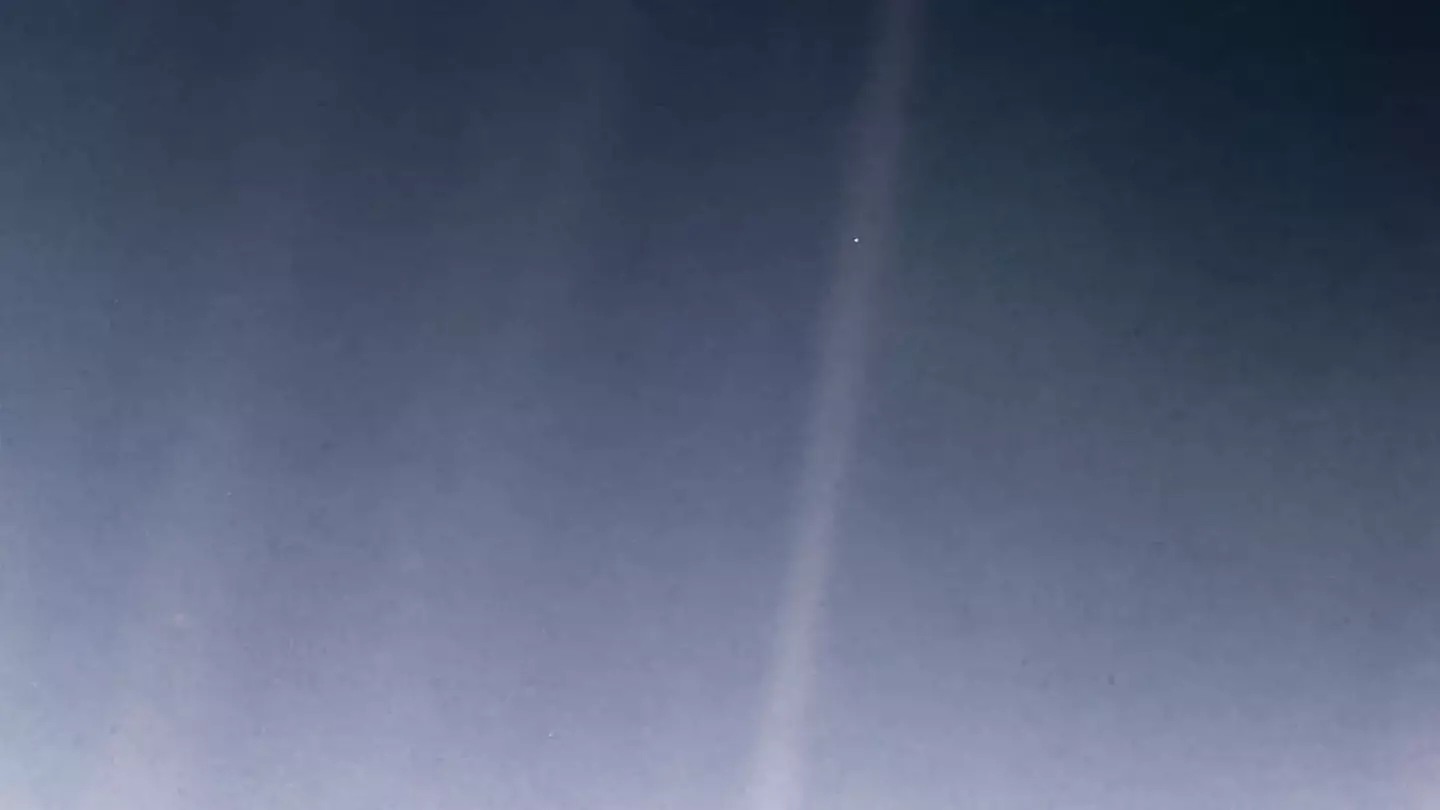
The image was released in 14 February 1990 (NASA/JPL-Caltech)
Now, upon first glance I know this photo looks like an image of the night sky taken in your back garden on an old mobile phone.
However, I assure you this is not an average photo of the night sky, but instead an image captured by by NASA’s Voyager 1 around 3.7 billion miles (6 billion kilometers) from the Sun.
The subject of this photo? Planet Earth.
Look closely at the photo and you’ll notice a small pale blue dot just off centre in the upper right part of the image, that’s us.
After seeing the images, Sagan was inspired to use it as a way to drive home just how unique our situation is in the universe.
Talking about the lack of interstellar life in a press conference for the image, Sagan said: “For me, that underscores the rarity and preciousness of the Earth and the life upon it.
“On that blue dot, that’s where everyone you know. Everyone you ever heard of, and every human being who ever lived, lived out their lives.”
Urging others to use the image as inspiration to look after our collective home, he continued: “Just speaking for myself, I think this perspective underscores our responsibility to preserve and cherish that blue dot, the only home we have.”
I can think of a few people who could use such a reminder, that’s for sure.
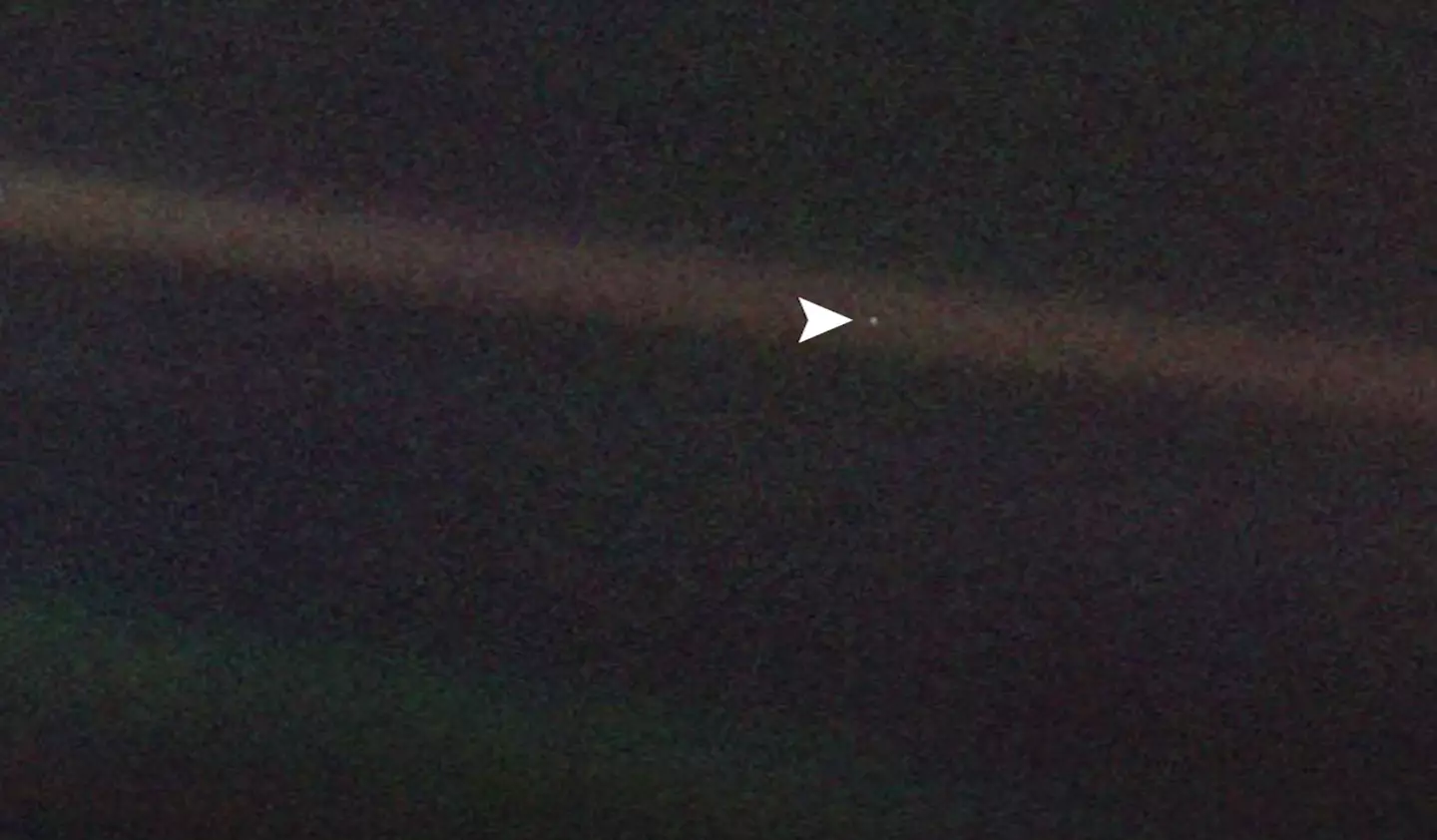
That’s us, the blue dot (YouTube/The Planetary Society)
Like the astronauts who’ve spoken candidly about the impact of the ‘Overview Effect‘, the image leave a lasting impact on Sagan. He would later go on to name his 1994 book Pale Blue Dot: A Vision of the Human Future in Space after the image.
Proving this photo is definitely not your typical image of the night sky.
The legacy of the ‘Pale Blue Dot’ has gone on to inspire more than Sagan in the subsequent years as well, with Garry Hunt telling the BBC in 2020 that he often uses the image as a way to drive home the importance of taking climate change seriously.
“Every time I give a climate talk and I talk about what you’re doing now to make a change – I show this picture because it shows the Earth is an isolated speck. This tiny blue dot is the only place we can possible live, and we’re making a jolly good mess of it,” he said in the interview.
Featured Image Credit: ( YouTube/ The Planetary Society)
Topics: Science, Space, NASA, Technology, Environment
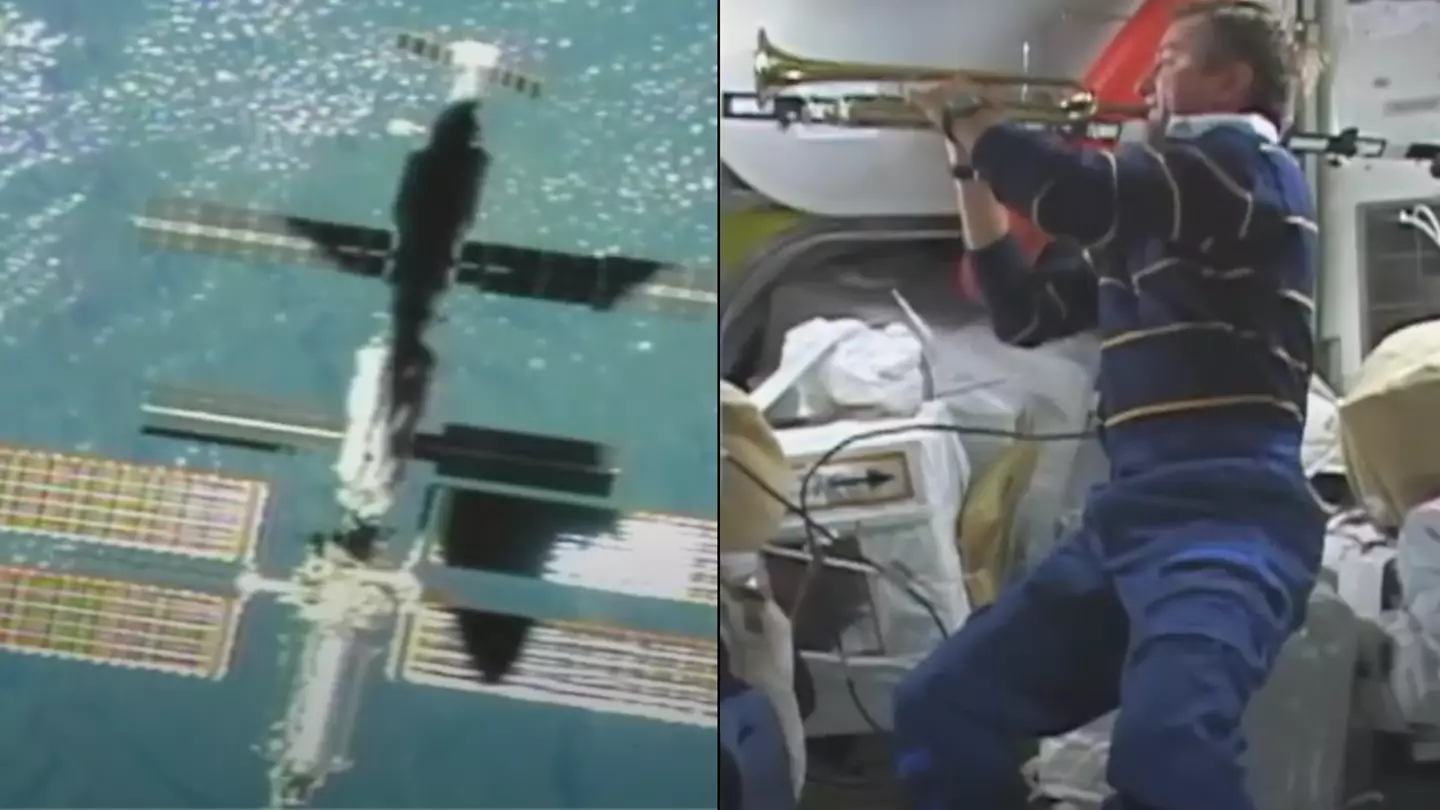
Viewers have praised what an astronaut did after footage caught from space following the tragedy of the 9/11 was released.
Originally caught by a NASA space explorer, it has was then released by Channel 4 Entertainment in 2014 as astronauts onboard the International Space Station (ISS) sat 250 miles above the surface, observing the horror event.
Occurring almost 23 years ago, the biggest terrorist attack in world history occurred when two planes crashed into New York City’s World Trade Center and another flew into The Pentagon in Virginia.
Almost 3,000 people died on 11 September 2001, as thousands more were injured, with families and friends left scarred by the loss of their loved ones.

The attack on the Twin Towers and the Pentagon began the US’ war on terrorism. (Education Images/Universal Images Group via Getty Images)
You’ve probably seen coverage of the second plane crashing into the the World Trade Center, with it being caught live on several TV broadcasts, so the chilling footage has been out there for years.
But many people may not be aware that there is footage that exists from the ISS, where astronauts, like many on the ground, were unsuspecting and idle, helpless to what they were seeing.
The footage captured of 9/11 comes from the only American onboard the space station at the time, Frank Culbertson, who called home base and was informed of what was happening on the ground that day – and he was distraught.
He then picked up a video camera and went to a window facing New York, and as the weather was clear, he could film the Big Apple perfectly.
Footage eerily revealed the huge column of black smoke that came from the World Trade Center, which Culbertson explained: “I could see this big grey blob enveloping southern Manhattan – what we were seeing was the second tower come down.”
Admitting that it was hard to be away from his loved ones during the scary time, he said that NASA arranged a phone call with his wife that evening, and the astronaut felt better when he learned that her and their kids would be okay.
In his video, he then sent a message to New Yorkers, saying that their city was still ‘very beautiful’ from space.
However, an emotional moment came later on, when Culbertson was informed about hijacking of the America Airlines flight 77.
“The next day, I got a call from the ground and he said Frank I’ve got some
bad news, it turned out that the captain of America Airlines flight 77 that crashed into the Pentagon was a friend of mine, Chic Burlingame,” he said.
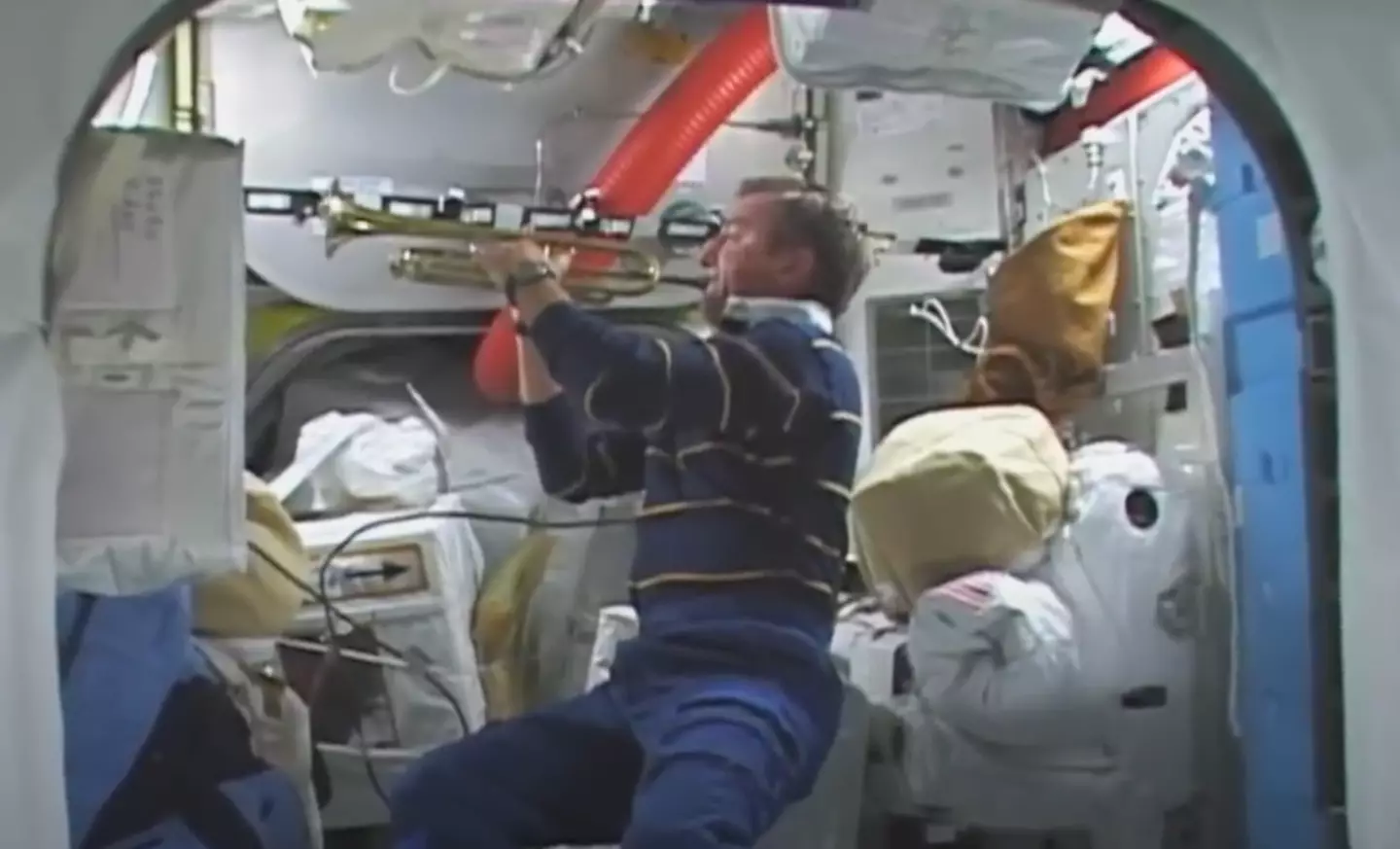
The astronaut gave his ex-classmate a heartfelt tribute from space. (Channel 4 Entertainment)
The astronaut said that the pilot was a classmate of his in the Navy, and was going to send a message to his ex-classmates anyway, but made a special tribute to his friend.
Having been in the Drum and bugle corps together, he played an emotional rendition of ‘Taps’, a bugle call that signals ‘lights out’ at the end of a military day, during memorial ceremonies, or during military funerals.
Describing it as a ‘final farewell’, Culbertson was clearly emotional as he played his bugle for his late friend.
Users found this to be incredibly touching, as one commented: “3:12 was very touching and respectful. Tears naturally fall.”
Another said: “This was sad but beautiful.”
While a third shared: “It’s insane to know that when the second tower came down, our only American in space at the time witnessed it as it happened.”
A different user said: “What an amazing way to pay respect to his friend and classmate. Taps from the ISS is one hell of a tribute for a lifetime of service.”
Featured Image Credit: Channel 4 Entertainment
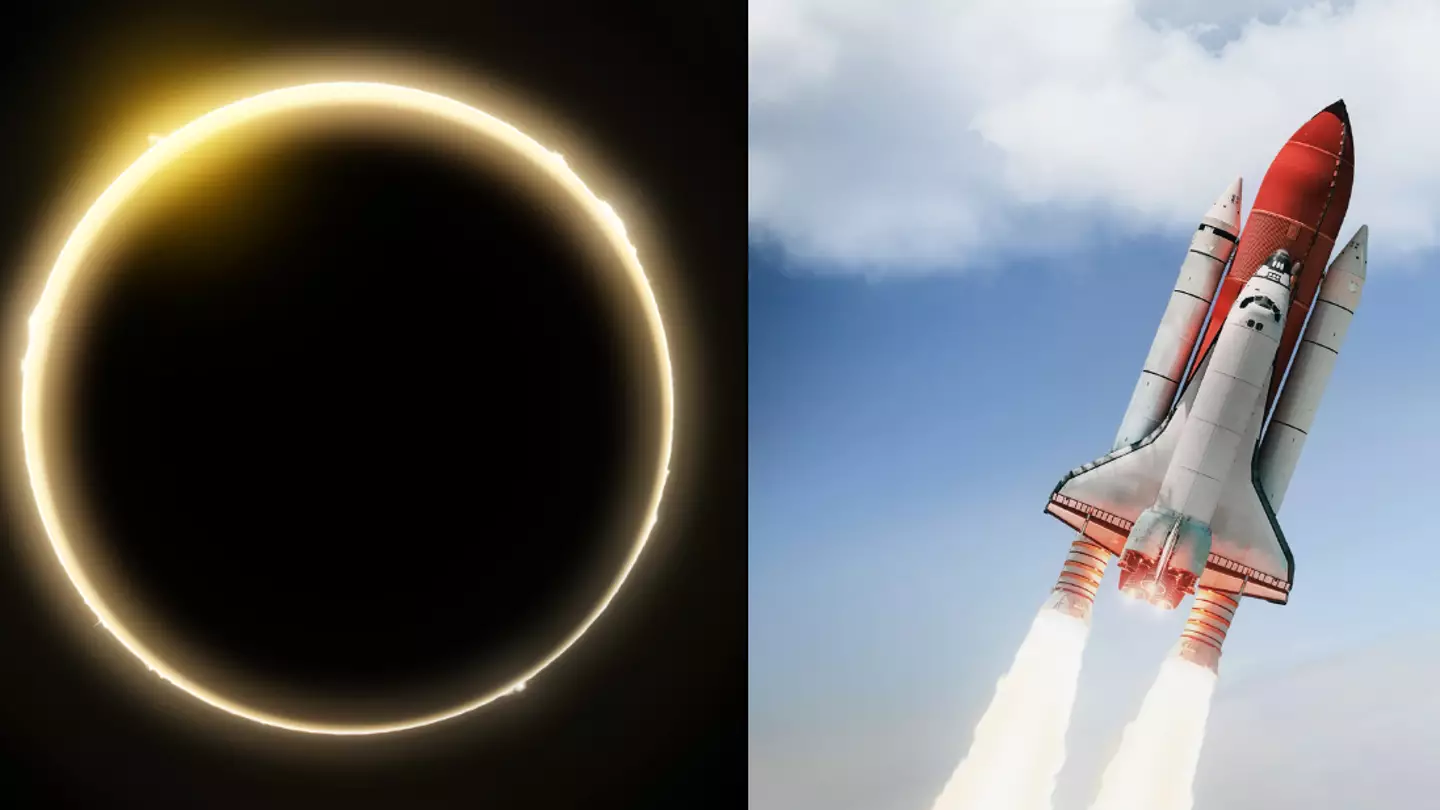
NASA is doing something incredible soon and will be taking full advantage of the upcoming solar eclipse.
The space experts have planned to launch rockets into its path, using the tiny window between the Sun and Moon as they cross paths for observation purposes.
According to NASA, it’ll look at ‘how Earth’s upper atmosphere is affected when sunlight momentarily dims over a portion of the planet’.
As millions of us are going to be able to see the rare sight of at least a partial eclipse, those in the US might even see some high-altitude planes and rockets too.
NASA’s rockets are planned to be launched from its Wallops Flight Facility in Virginia where they will be researching ‘disturbances’ in the Earth’s ionosphere.
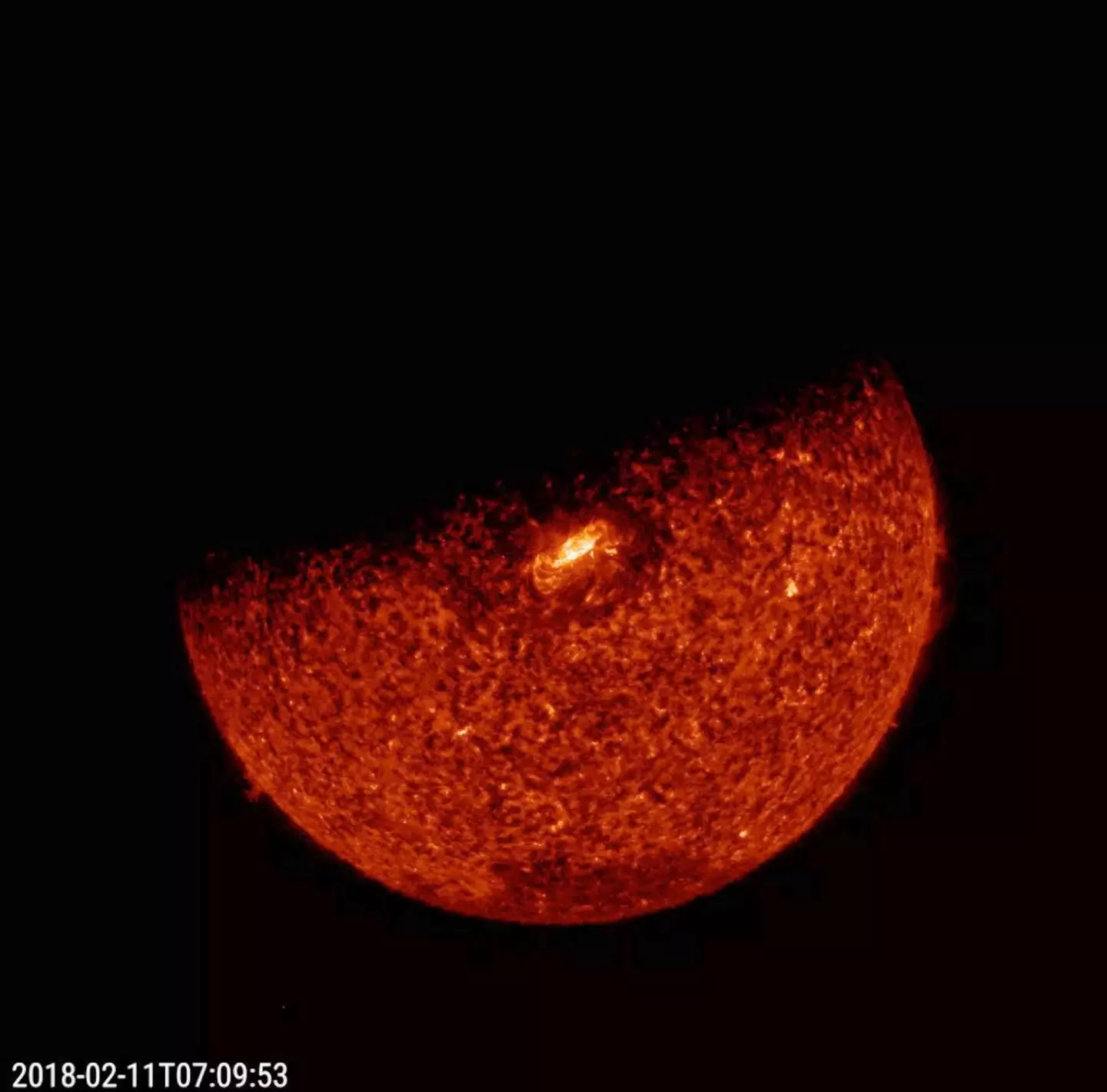
NASA
Three rockets will be launched during the eclipse on 8 April, according to a spokesperson.
NASA explained: “The sounding rockets will launch at three different times: 45 minutes before, during, and 45 minutes after the peak local eclipse.
“These intervals are important to collect data on how the Sun’s sudden disappearance affects the ionosphere, creating disturbances that have the potential to interfere with our communications.”
These disturbances are caused when particles in the ionosphere become charged under the Sun’s radiation, however due to changes in the weather, it can make the ionosphere difficult to predict.
This is why the space agency will use the small window of opportunity during the eclipse to check out what’s going on up there.

NASA
NASA said: “It’s often difficult to study short-term changes in the ionosphere during an eclipse with satellites because they may not be at the right place or time to cross the eclipse path.
“Since the exact date and times of the total solar eclipse are known, NASA can launch targeted sounding rockets to study the effects of the eclipse at the right time and at all altitudes of the ionosphere.”
Recording information at a maximum altitude of 260 miles, the three rockets will ‘measure charged and neutral particle density and surrounding electric and magnetic fields’.
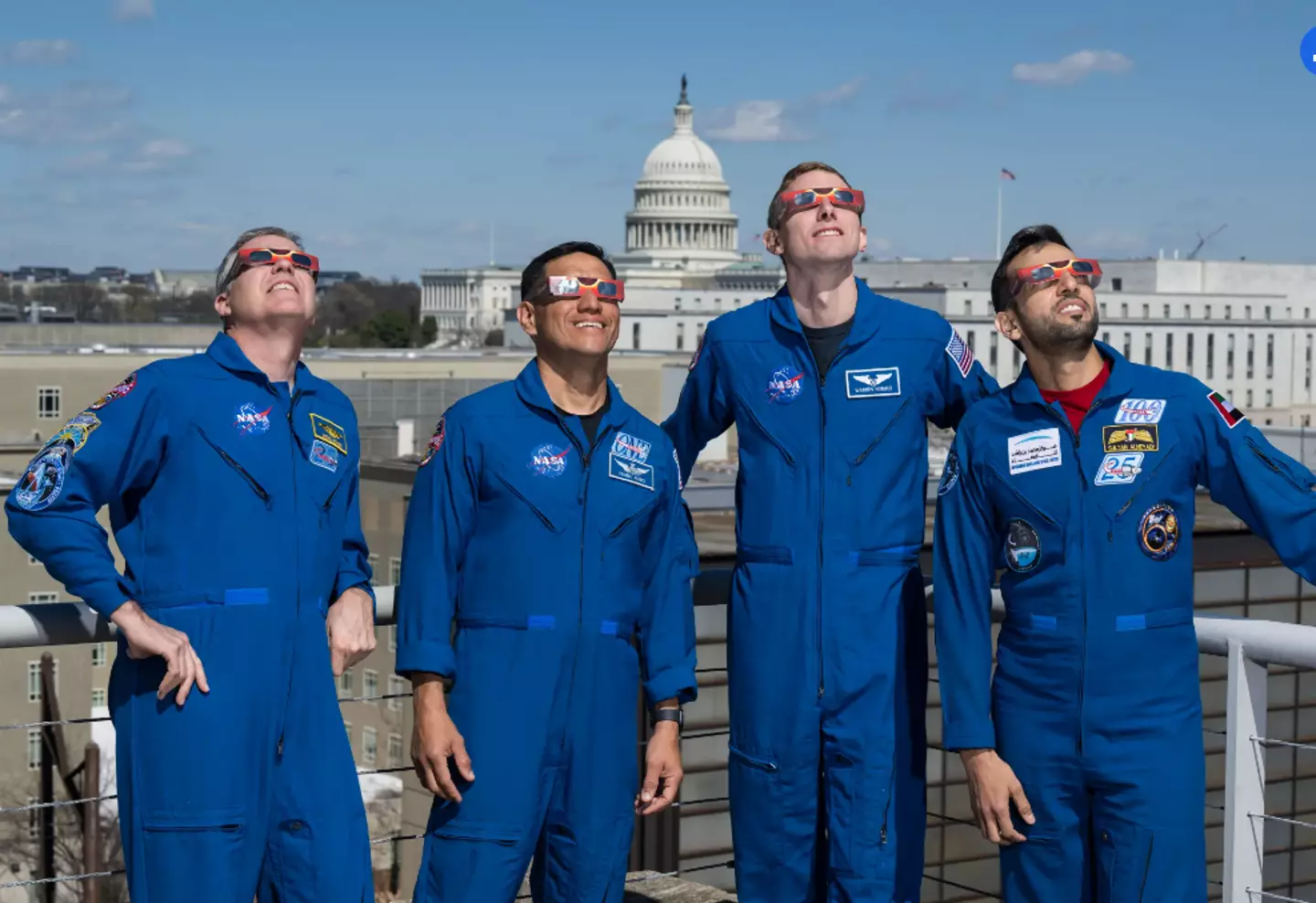
NASA
Experts from the Air Force Research Laboratory in New Mexico, students at the Embry-Riddle Aeronautical University and researchers from the Massachusetts Institute of Technology’s (MIT) Haystack Observatory will each be conducting their own research into the event.
As there won’t be another total solar eclipse in the US until 2044, this is a very rare opportunity for them to explore what is happening in on the cusp of space.
Featured Image Credit: Getty Stock Photos
Topics: NASA, Space, Science, Technology
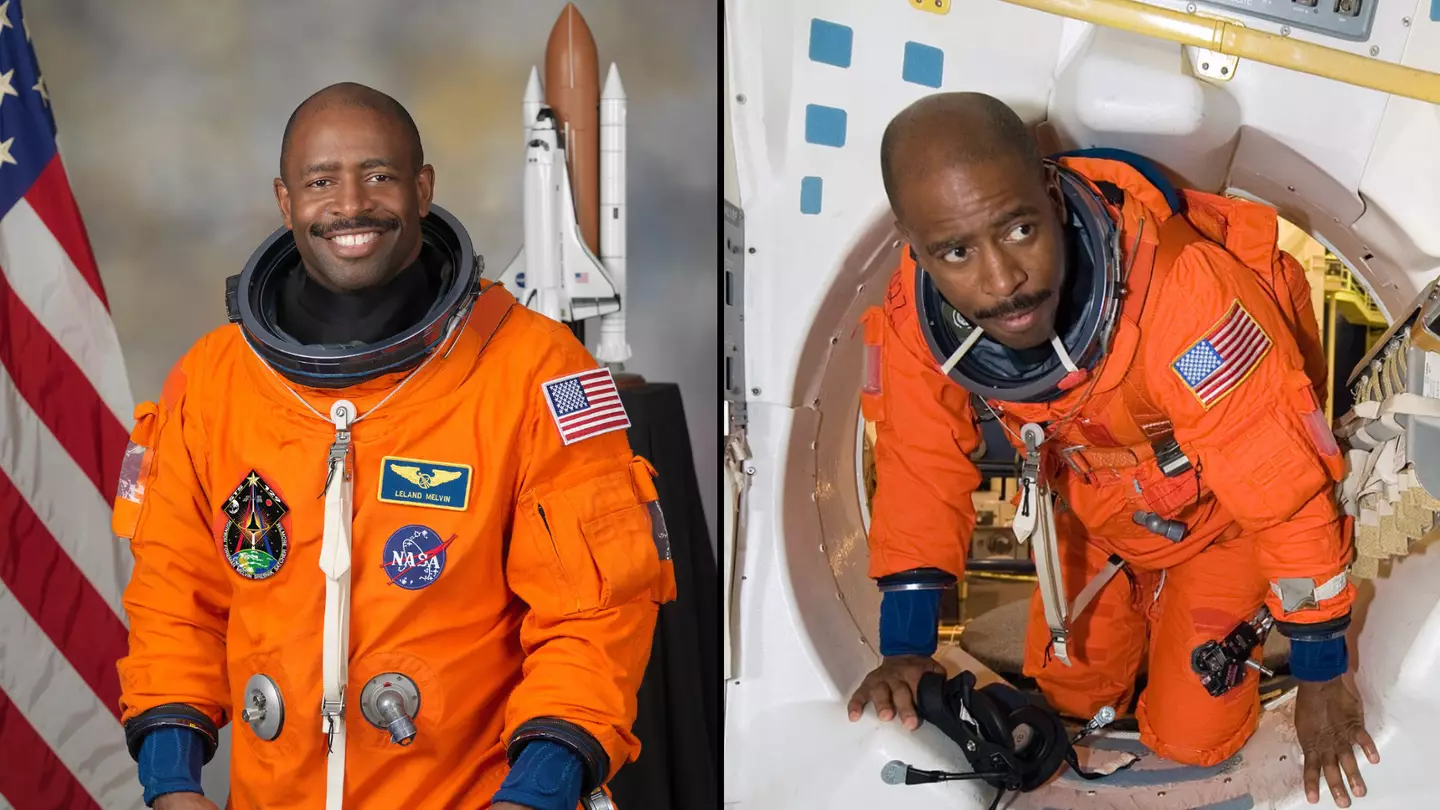
A NASA astronaut once thought he saw something very strange ‘floating out of the payload bay’ and had to phone home to ask about it.
Leland Melvin was a NASA engineer and former astronaut and flew two missions into space on board the Space Shuttle Atlantis.
Both times he visited the International Space Station to deliver equipment and Melvin has logged a grand total of 565 hours in space.
However, years after be ventured into space, he was asked about his view on alien life in the solar system and UFOs.
An account on Twitter named UFO News asked the astronaut whether he thought we were alone in our solar system and if he’d ‘ever witnessed a UFO’.
After all, a NASA boss has admitted the space agency is constantly on the lookout for extraterrestrials, so maybe they’d finally found some.
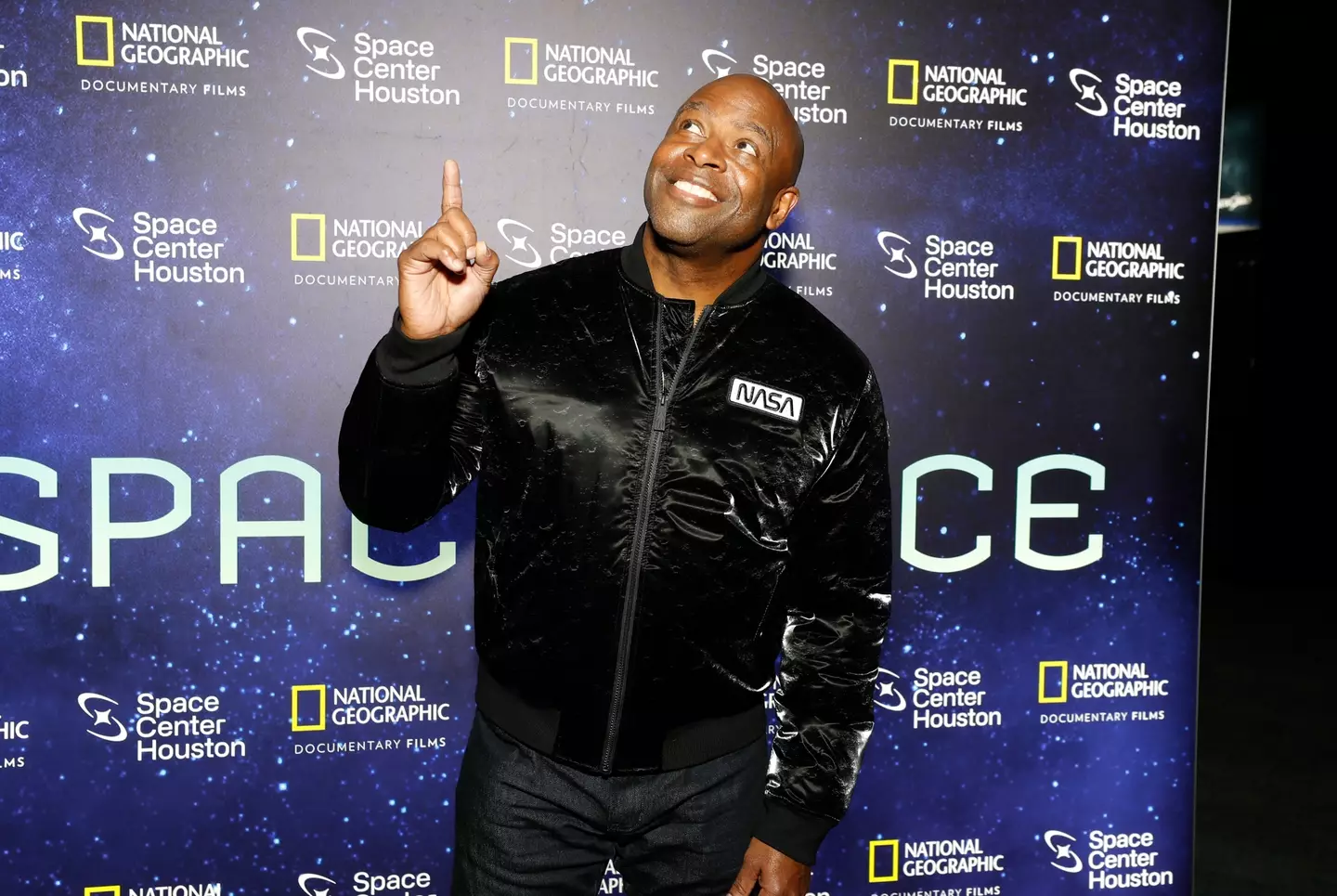
Bob Levey/Getty Images for National Geographic Documentary Films
Melvin’s view on the matter was that he hadn’t seen an alien but he once ‘thought I saw something organic/alien like floating out of the payload bay’.
He explained that he ‘called the ground to ask what it could be’ and was told that what he saw was not some extra-terrestrial life form but ‘ice that had broken off of the Freon hoses’.
“Translucent, curved, organic looking,” the astronaut described it as, adding the alien emoji to his answer.
So there you go, it looked a bit like an alien but was actually just a chunk of ice.
Or perhaps it was an alien which had cleverly disguised itself as a chunk of ice, but you’d probably have expected E.T. to have done something in the years since that incident.
